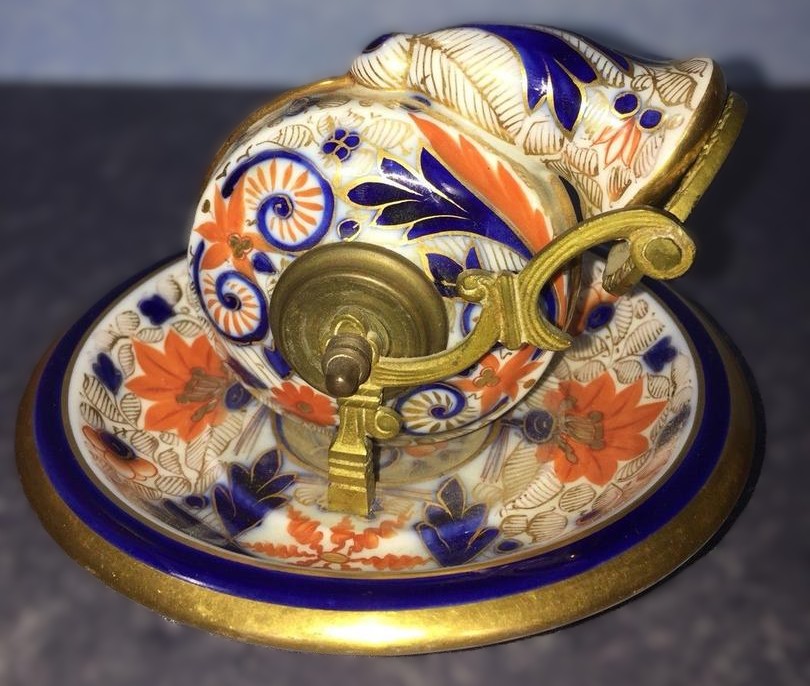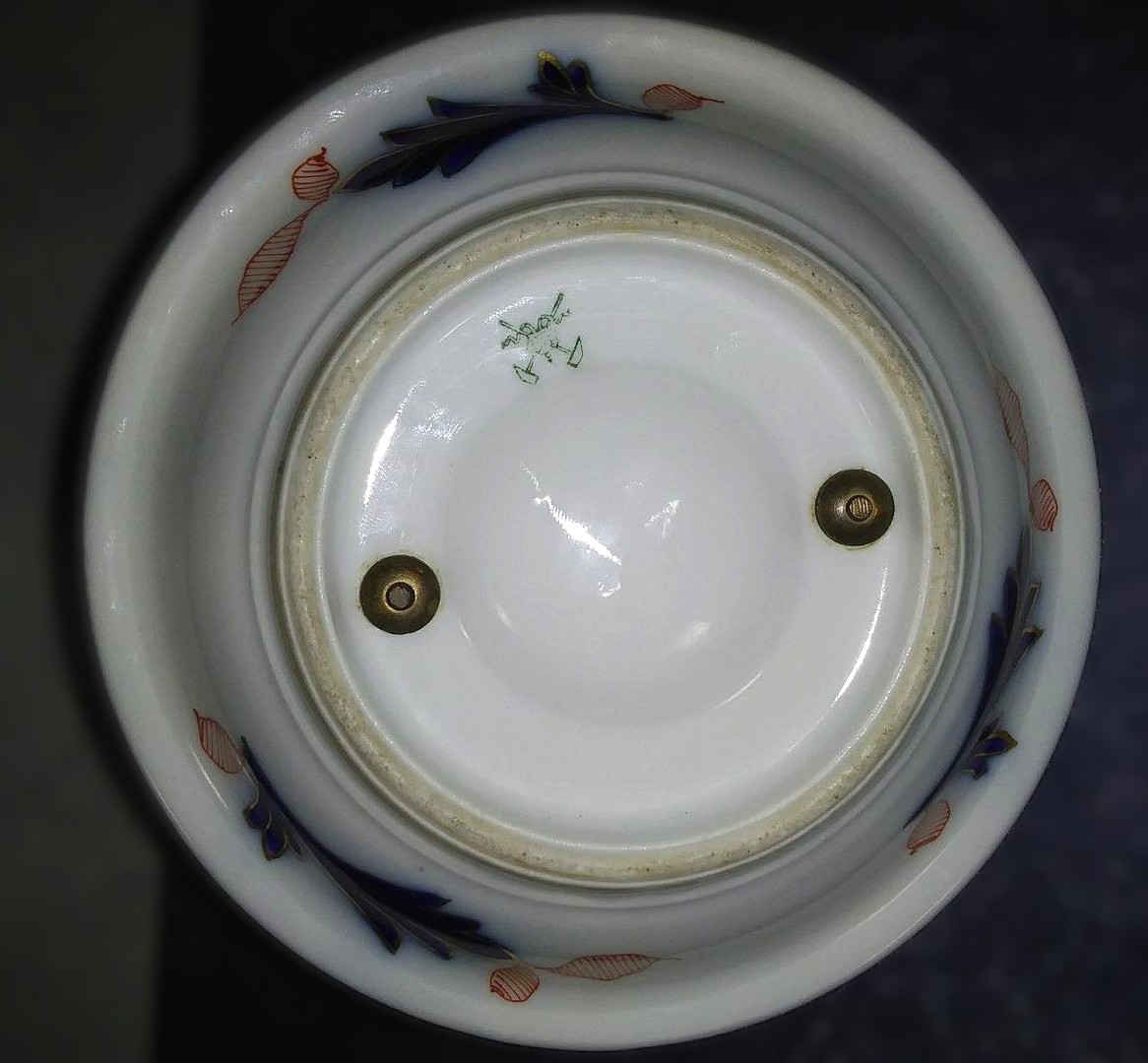
Porcelain Imari Style Revolving (Snail) Inkstand
| Categories | Mechanical - Snail / Pivoting |
| Material | Porcelain |
| Markings | See Narrative |
| Manufacturer | Pirkenhammer |
| Origin | Bohemia |
| Date or Era | circa 1870 |
| Measuring | 5 ½” diameter; 3 ¾” high |
Revolving inkstands like this are often referred to as snail inkstands because of their resemblance to snail shells.
- Form and Material: It consists of a bottle-like, porcelain ink reservoir that is volute-shaped (like a seashell or snail’s shell). This porcelain piece is mounted on a decorative, circular porcelain base by an ornate brass bracket (standard), which incorporates the pivoting mechanism.
- Decoration (Imari Style): The porcelain features an elaborate, hand-painted pattern that is a Western interpretation of the Japanese Imari style.
- The classic Imari palette of rich cobalt blue and a vibrant iron red/rusty orange enamel is used, contrasting with the white porcelain body.
- The decoration is heavily accented with detailed gold gilding in foliate and geometric patterns, characteristic of luxury European porcelain that imitated the popular Imari wares of the 18th and 19th centuries.
Construction and Function
The “snail” inkwell is a type of mechanical or pivoting inkstand with a built-in stopper to prevent the ink from evaporating.
- Construction: The porcelain ink reservoir is mounted on a metal mechanism that allows it to swivel or pivot around two bearing points.
- To Close (Non-Use): When the inkwell is closed, the snail-shaped reservoir is rotated so that its narrow, trumpet-shaped opening is pushed forward and rests securely against a stopper or plate on the metal mount. This seals the opening, keeping the liquid ink secure and preventing excessive exposure to air, contamination, and accidental spillage.
- To Open (For Use): To access the ink, the user simply pulls the “snail” opening forward. The reservoir tilts down, exposing the opening at the end of the “shell” so a dip pen or quill can be dipped directly into the ink.
Date and Origin
- Dating: This type of revolving inkwell, along with other fanciful designs, was in fashion during the 19th century, particularly the Victorian era. Documented examples of the porcelain “snail” form date to around 1860–1880.
- Origin: The style is European, as the snail form was an innovation from this region (e.g., France/Bohemia).
Mark Identification: Pirkenhammer
The green mark on the base of this inkwell is for the Pirkenhammer manufactory.
- The Pirkenhammer manufactory was established in 1803 in Bohemia. At that time, Bohemia was part of the Austrian Empire (and later the Austro-Hungarian Empire).
- The factory’s period of operation and its production of high-quality, decorative porcelain, including imitations of Oriental styles, perfectly matches the era and nature of this inkwell.
- The crossed hammers mark itself is a green underglaze mark, a color often used on porcelain marks in the 19th century.
Sold for $215 in September 2025
Content disclaimer. The information posted is the owner’s best knowledge and may not have been vetted by the SOIC. We welcome comments, corrections, and additions, working to make our website information comprehensive and accurate.
Join the Society of Inkwell Collectors (SOIC) – it’s free!
Founded in 1981 as a non-profit organization,
we are documenting inkwells (and accessories).
We’re here to help and inform!



